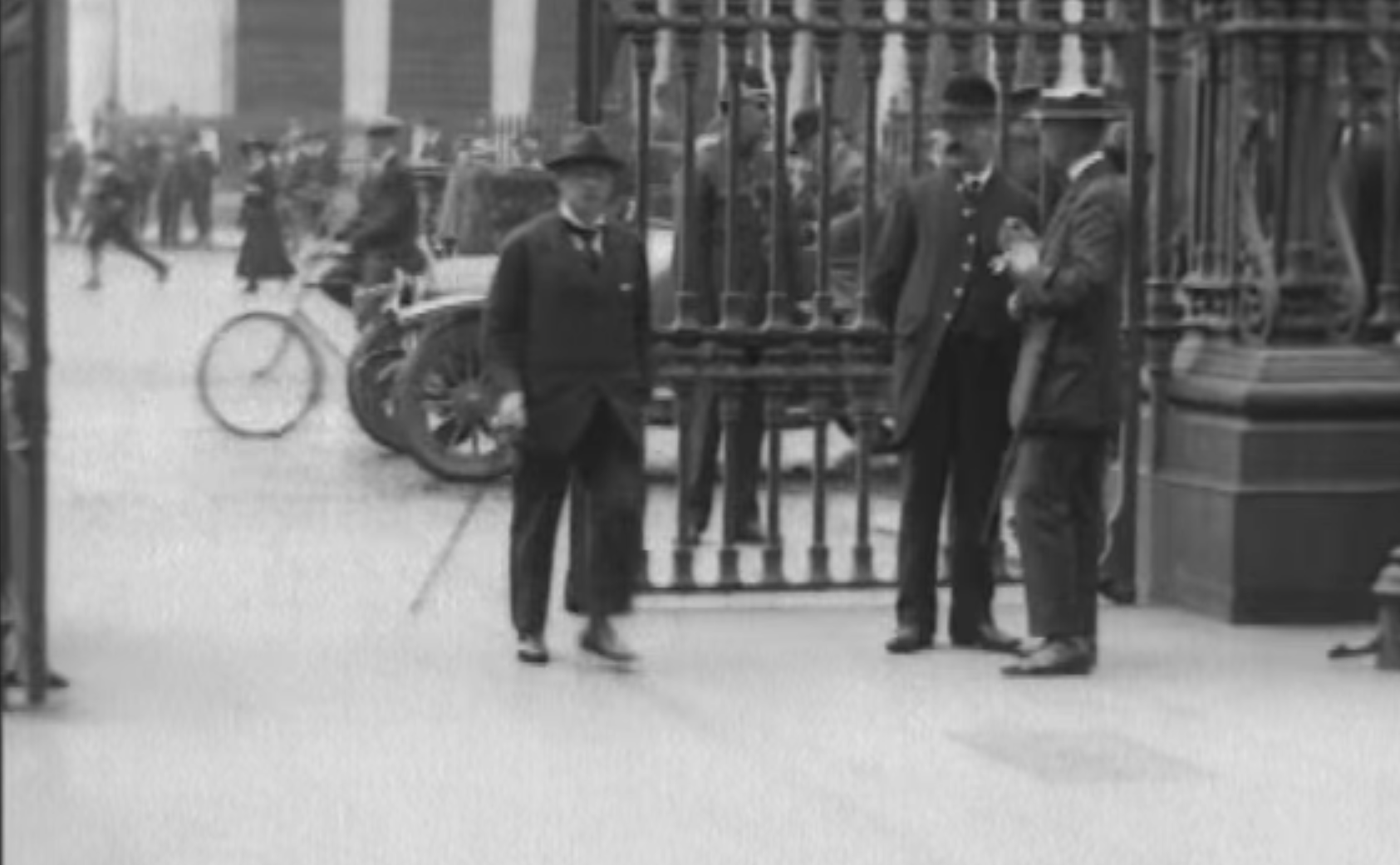The cobblestones of Front Square this week played host to a menagerie of journalists, television cameras and inquisitive onlookers as Fine Gael and Fianna Fail came to College to hammer out an agreement for the formation of a government.
Alumni like Leo Varadkar and Paschal Donoghue took the stride across the square with the Fine Gael contingent while Fianna Fail’s group was populated by Michael McGrath and new blood Jim O’Callaghan.
After talks between the two largest parties in the state broke down in Government Buildings, the location for hammering out a deal was moved to Trinity, specifically the historic locale of the Provost’s House at 1 Grafton Street.
The reported room in which talks took place in Leinster House was situated exactly halfway between the office of Enda Kenny and that of Micheal Martin, but even that didn’t prove to be neutral enough ground for debate. Instead some open plan thinking and a step out from behind the barricades was needed.
According to a College spokesperson speaking to Trinity News, College was sought out as a venue by the political handlers, with the Irish Times reporting that Varadkar made contact with his alma mater. “The Provost was asked on Friday [if the house could be used] and replied positively the same evening”, said the spokesperson.
“The main meetings were in the Provost’s library. This is usually used for college business. Some meeting were moved elsewhere but there we no major disruption. The Provost was away on business for much of the talks.”
It is not, however, the first time that Trinity has played host to opposing sides hoping to come to a compromise.
Irish Convention
In July 1917, the Irish Convention opened, its aim to solve the Irish question following the rebellion of the previous year and the growing political unrest towards British rule in the country. The location for the historic talks was to be College’s Regent House, the grand room situated above Front Arch.
Assembled members represented what was considered to be a fair representation of the Irish population, with different shades of unionism, nationalism and labour represented, along with more than half of delegates being Catholic.
A month previously Eamon De Valera was elected for Sinn Fein following the bye election for the seat vacated by John Redmond’s late brother William. In the face of this momentum, the organisers of the talks offered Sinn Fein five places at the convention, but they did not attend.
The plan reached by the diverse members assembled was one of home rule for both the south and the north.
Trinity didn’t provide only a location, but the influence of its leader is noted too in the convention. The then provost of College John Pentland Maffety and the Archbishop of Armagh noted on page 35 of the report on the convention that they could not support the agreement reached by the majority of the delegates, saying that “the coercion of Ulster would be unthinkable and the partition of Ireland would be disastrous.”
The provost attended forty-nine sessions of the convention while the archbishop was present for fifty.
Their solution was one of federalisation for Ireland, which would ensure autonomy for provinces like Ulster and could at some point be enabled across the British Empire.
In the end, because of the increasing numbers of British soldiers killed in the First World War, implementation of the convention’s report was tied to the introduction of conscription in Ireland, which until then had not been part of the conversation and which led to a crisis.
Regent House
Regent House today is known to students either as an exam venue or as a theatre for the ever growing numbers of overenrolled classes in Trinity. Musically inclined students would also be familiar with Regent House as a rehearsal space for orchestral or choral work. The grand staircase that leads up to the lonely sparsely dressed room is one of the last vestiges of Trinity grandeur in a time when such displays have become tacky.
The room continued to find itself at the centre of controversy well into the late 2oth century, most notably during a period in which is served as the junior common room for the students’ union.
During this time then SU president and rabble rouser Joe Duffy led an occupation of the room, and barricaded the entrance of it, resulting in an order for removal being sent to the High Court. Duffy would later recall that the secret tunnel that leads to Regent House from the student rooms of House Six helped secure an easy route to the venue at the time.
This week many journalists surely would have hoped to have found the tunnel between Front Square and the Provost’s House that would have led them to the next government.







